Search the Blog
Categories
- Books & Reading
- Broadband Buzz
- Census
- Education & Training
- General
- Grants
- Information Resources
- Library Management
- Nebraska Center for the Book
- Nebraska Libraries on the Web
- Nebraska Memories
- Now hiring @ your library
- Preservation
- Pretty Sweet Tech
- Programming
- Public Library Boards of Trustees
- Public Relations
- Talking Book & Braille Service (TBBS)
- Technology
- Uncategorized
- What's Up Doc / Govdocs
- Youth Services
Archives
Subscribe
Category Archives: Census
A History of the Census in the United States : Part 19
The Nineteenth Census: Census Day was April 1, 1970.
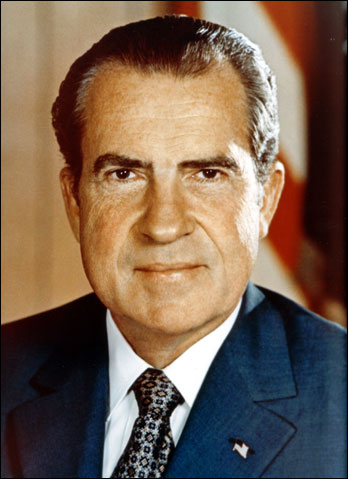
In 1966, the Census Bureau solicited suggestions from its advisory committees and from the general public about the makeup of the census and the availability of the resulting data products. It instituted a series of 23 local public meetings around the country to broaden the scope of its efforts, which resulted in numerous proposals for additional inquiries about the scope and structure of the census, and interest in increasing data products published, particularly for smaller areas such as blocks.
Enumeration
Studies after the 1950 and 1960 censuses revealed that those censuses had undercounted certain segments of the population. Researchers also noted a growing distrust of government and resistance to responding to the census, despite an increasing need for accurate information in both the private and public sectors. In large measure, the increased need for data resulted from the federal government’s reliance on population and other information collected by the census when distributing funds to state and local governments. In an effort to reduce the complexity of its products, the Census Bureau reduced the number of inquiries on the long-form questionnaire from 66 to 23.
The Census Bureau created an address register for densely settled areas that U.S. Post Office employees who were familiar with their routes were instructed to correct and update as needed. The register was also used to ensure that all housing units were accounted for when enumerators had completed their assignments.
The U.S. Post Office delivered census questionnaires with instruction sheets to every household several days prior to Census Day. In areas with a substantial number of Spanish-speaking households, a Spanish-language version of the instruction sheet was also enclosed. For the first time, a separate question on Hispanic origin or descent was asked, but only of a 5 percent sample of the population.
Also for the first time, residents of urban and surrounding areas were instructed to mail their forms back to the Census Bureau where enumerators reviewed them and used follow-up interviews to check on missing or incorrect responses. Rural householders received questionnaires in the mail, but were asked to hold the form for pickup by an enumerator. A letter explaining the need for the data collected and emphasizing the confidentiality of responses accompanied all census questionnaires.
Sampling
Only 5 questions were asked of all individuals: relationship to household head, sex, race, age, and marital status. Other questions were asked of a 15 percent sample and still others of a 5 percent sample. Questions common to both samples resulted in a 20 percent sample.
Technological Advancement
Computerized address lists, called Address Coding Guides, helped assign census geographic codes to questionnaires.
A major innovation for the 1970 Census was the production of a series of computer tape files, called “Counts.” Counts one, two, and three contained complete count data for block groups/enumeration districts, census tracts and minor civil/census county divisions, and blocks, respectively. The fourth through sixth Counts provided sample data for geographic areas of varying population size. The Census Bureau also produced six Public Use Microdata Sample files, each containing complete information for a small sample of the population; roughly two million individuals. A variety of public and private institutions participated in the Census Bureau’s Summary Tape Processing Center Program, a loose-knit group of organizations that processed data from the 1970 census computer tapes.
Further Information
- A detailed procedural history of the 1970 census are available in Procedural History: 1970 Census of Population and Housing [ZIP 165MB]
- A wide variety of historical statistics from this and other decades is available in Historical Statistics of the United States: Colonial Times to 1970. It is available as a PDF [74.4MB] or 2-part ZIP file: Part I [52.2MB] | Part II [66.1MB].
- Reports and statistics from the 1970 census.
Information provided from Census.gov
Posted in Books & Reading, Census, Education & Training, General, Information Resources, What's Up Doc / Govdocs
Tagged census
Leave a comment
A History of the Census in the United States : Part 18
The Eighteenth Census: Census Day was April 1, 1960.
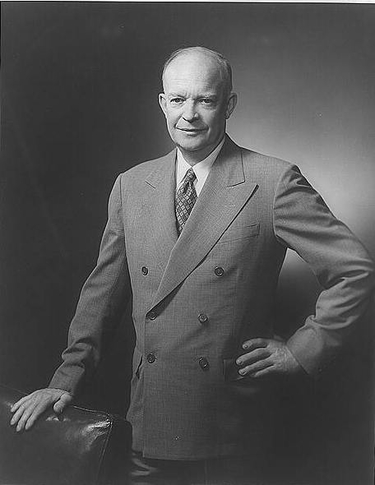
Enumeration
1960 marked the birth of the first mail-out census. Earlier censuses had used self-enumeration on a limited scale, but 1960 was the debut for this technique as a primary method for the collection of population and residential data. The postal service delivered questionnaires to every occupied housing unit. Householders were asked to complete the questionnaire and hold it for an enumerator to pick up.
Enumeration efforts were divided into two stages. The first stage concentrated on the quick collection of a few data items for every person and dwelling unit- information available from responses to questions on the questionnaire that had been delivered to every household. The second stage focused on the collection of more detailed economic and social information from a sample of households and dwelling units. Second stage questionnaires were hand-delivered by enumerators when they came to pick up the first form. Households receiving the second questionnaire were asked to complete the form and mail it to their local census office in postage-paid envelopes provided by enumerators.
In areas of low population density, the two-staged enumeration was combined to allow enumerators to collect and record sample data at the same time they came to fill out the general questionnaire.
Sampling
Additional sample questions were asked of 25 percent of the population. In urban areas (accounting for about 80 percent of the nation’s population), enumerators carried questionnaires containing the sample population and housing questions for every fourth housing unit. If the units were occupied, the householders were asked to complete the sample questionnaires and mail them to district offices. If the units were vacant, the enumerators completed the questionnaires.
The greater use of sampling meant that the totals for some less populated areas were subject to moderate amounts of sampling variation, which did not significantly impair the usefulness of the statistics gathered. Using a 25 percent sample of households eliminated nearly 75 percent of the processing expenses that would otherwise be required.
Additional questions, which had been discussed but not included in several past censuses, focusing on place of work and means of transportation to work were added in 1960.
Technological Advancement
Computers processed nearly all data from the 1960 census. For the first time, the Census Bureau used a film optical sensing device for input to computers (FOSDIC). This machine “read” and converted to code on magnetic tape data appearing on returned questionnaires thus eliminating the time and expense for the previously necessary step where clerks entered the data on punch cards. The questionnaires for 1960 were designed so that respondents could indicate their answers by marking small corresponding circles on the page. The completed questionnaires were photographed onto microfilm with automatic cameras; FOSDIC then read the blackened dots (which appeared as clear holes on the negative film) and transferred the data they represented to magnetic tape for the computer at a speed of 3,000 items per minute. Later versions of the FOSDIC device were able to process up to 70,000 items per minute.
Further Information
- A detailed procedural history of the 1960 census is available in 1960 Censuses of Population and Housing: Procedural History [66.7 MB]
- A wide variety of historical statistics from this and other decades is available in Historical Statistics of the United States: Colonial Times to 1970. It is available as a PDF [74.4MB] or 2-part ZIP file: Part I [52.2MB] | Part II [66.1MB].
- Reports and statistics from the 1960 census.
Information provided from Census.gov
Posted in Books & Reading, Census, Education & Training, General, Information Resources, What's Up Doc / Govdocs
Tagged census
Leave a comment
2020 Census Preparation Manual
The 2020 Census will be conducted primarily online, creating additional obstacles to counting already under-counted populations. With this in mind, communities and organizations are preparing to support enumeration efforts by providing safe internet access points, answering questions from the community, and tracking incidents that arise.
The Digital Equity Laboratory has released a learning guide, Preparing for the First Digital Census, meant for anyone who intends to work with communities towards a complete count during Census 2020. Based on expert risk assessments and a series of pilot workshops across New York State, they have compiled a set of curriculum modules intended to equip organizations with the information and tools they need to play their part.
The goal is to provide both digital and public-facing tactics and techniques to reduce confusion, find the right path to participation for all, help prevent possible harms, and enable communities to better prepare against the uncertainties of a digital census. The aim has been to address holistic safety concerns, not solely cybersecurity.
Complete manual: “Preparing for the First Digital Census”
UPDATES: Libraries and the 2020 Census

| New webinar recording about responding to the Census If you missed ALA’s sold-out webinar, “Responding Online to the 2020 Census: What Libraries Need to Know,” the recording is now available. The webinar orients library staff to the 2020 Census questionnaire, the online response system, other options for responding, common questions, and tips for libraries. New tip sheet on Census programs and partnerships On January 30, ALA released “Libraries and the 2020 Census: Programming, Outreach, and Partnerships (PDF),” a 2-page tip sheet that describes how libraries can reach hard-to-count populations and build community collaborations around the 2020 Census. Updated “Libraries’ Guide to the 2020 Census” On January 22, ALA released an updated “Libraries’ Guide to the 2020 Census.” The revised 22-page guide (PDF) includes the latest information about Census operations and tips for libraries. Share it with a colleague who needs to know! Upcoming events February 13, 2 pm ET: YALSA webinar: “Engaging Teens in the 2020 Census” (free for YALSA members, paid for others) February 18, noon ET: ODLOS webinar: “Census 2020 Outreach to Communities of Color” February 28: PLA Conference: “2020 Census Countdown: What You Need to Know Now” (3:30 pm CT, Music City Center, room 103) News of note The Scoop: “Completing the Count” (January 26, 2020) – report of ALA Midwinter program UPI: “Census Bureau aims to improve response rates” (January 23, 2020) – includes a discussion of libraries’ activities School Library Journal: “Libraries Are Preparing for the 2020 Census. With Plenty at Stake, There’s Still Work To Be Done” (January 21, 2020) The Public Libraries Podcast: “The 2020 Census and Public Libraries” (January 21, 2020) |
A History of the Census in the United States : Part 17
The Seventeenth Census: Census Day was April 1, 1950.
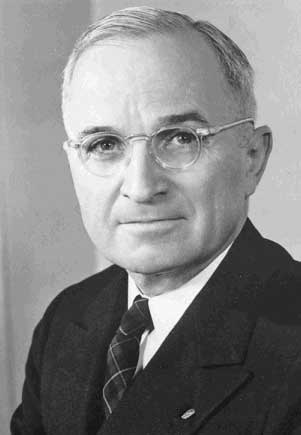
Enumeration
The 1950 census encompassed the continental United States, the territories of Alaska and Hawaii, American Samoa, the Canal Zone, Guam, Puerto Rico, the Virgin Islands of the United States, and some of the smaller island territories.
Americans abroad were enumerated for the first time in 1950. Provisions were made to count members of the armed forces, crews of vessels, and employees of the United States government living in foreign countries, along with any members of their families also abroad. This enumeration was carried out through cooperative arrangements with the departments of Defense and State, the United States Maritime Administration and other federal agencies that took responsibility for distributing and collecting specially designed questionnaires.
Other persons living abroad were to be reported by their families or neighbors in the United States, but the quality of these data was considered to be poor and they were not included in the published statistics.
A new survey on residential financing was conducted as part of the 1950 census. In a separate operation, information was collected on a sample basis from owners of owner-occupied and rental properties and mortgage lenders.
Efforts to Improve Coverage and Completeness
Several procedures were used to improve the accuracy and completeness of the 1950 census, including: improved enumerator training, providing enumerators with detailed street maps of their assigned areas, publishing “Missed Person” forms in local newspapers, and setting a specific night to conduct a special enumeration of persons in hotels, tourist courts, and other places frequented by transients.
For the first time, a post-enumeration survey was instituted as a further check on the accuracy and completeness of the count. The Census Bureau recanvassed a sample of about 3,500 small areas and compared these to the original census listings to identify households that may have been omitted in the original enumeration. In addition, a sample of about 22,000 households was reinterviewed to determine the number of persons likely omitted in the initial count.
Technological Advancement
The Census Bureau began use of the first non-military computer shortly after completing the 1950 enumeration. UNIVAC I (for Universal Automatic Computer), the first of a series, was delivered in 1951, and helped tabulate some of the statistics for the 1954 economic censuses. It weighed 16,000 pounds and used 5,000 vacuum tubes.
Intercensal Activity
In August of 1954, Congress codified the various statutes, including 1929’s Fifteenth Census Act, which authorized the decennial and other censuses, as Title 13, US Code. Since then, Title 13 (along with other laws) has been the underlying authority that governs the actions of the Bureau.
Further Information
- A detailed procedural history of the 1950 census is available in The 1950 Censuses – How They Were Taken [ZIP 37.3MB]
- A wide variety of historical statistics from this and other decades is available in Historical Statistics of the United States: Colonial Times to 1970. It is available as a PDF [74.4MB] or 2-part ZIP file: Part I [52.2MB] | Part II [66.1MB].
- Reports and statistics from the 1950 census
Information provided from Census.gov
Posted in Books & Reading, Census, Education & Training, General, Information Resources, What's Up Doc / Govdocs
Tagged census
Leave a comment
A History of the Census in the United States : Part 16
The Sixteenth Census: Census Day was April 1, 1940.
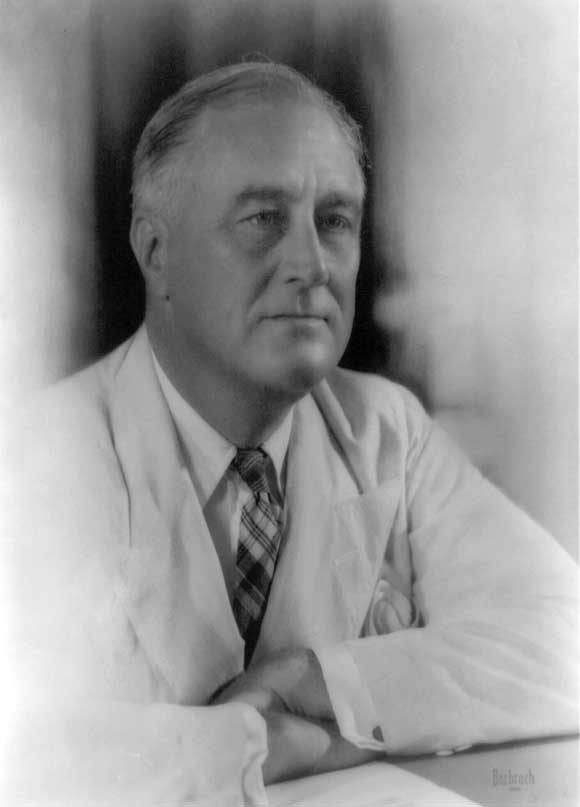
Authorizing Legislation
In August 1939, Congress authorized the director of the census to conduct a national census of housing “in each state, the District of Columbia, Hawaii, Puerto Rico, the Virgin Islands, and Alaska, in the year 1940 in conjunction with, and at the same time, and as part of the population inquiry of the sixteenth decennial census.” The census was “to provide information concerning the number, characteristics (including utilities and equipment), and geographic distribution of dwelling structures and dwelling units in the United States.”
Enumeration
Because the originating legislation came so late in the census planning process and because the nature of the questions was so different from those in the census of population, the housing inquiries in the 1940 census were collected via a separate census. In practice, enumerators collected information for the housing census at the same time they collected information for the population census.
Sampling
One of the major innovations of the 1940 census was the use of advanced statistical techniques, including probability sampling, which had been used only on an experimental basis before. Sampling had been tested in a trial census of unemployment carried out by the Civil Works Administration in 1933-1934 and surveys of retail stores in the same decade, and an official sample survey of unemployment in 1937 that covered about 20,000 households.
Sampling in the 1940 census allowed the addition of a number of demographic questions of enumerated persons without unduly increasing the overall burden on respondents and on data processing. It also made it possible to publish preliminary returns 8 months ahead of the complete tabulations. Sampling also allowed the Census Bureau to increase the number of detailed tables published and review the quality of the data processing with more efficiency.
Several new questions reflected the concerns of the depression years. Along with the new census focusing on the condition of the nation’s housing stock and the need for public housing programs, the 1940 census included questions about employment, unemployment, internal migration and income.
Further Information
- Procedural History of the 1940 Census of Population and Housing [PDF 13.4MB], prepared by Robert Jenkins, The Center for Demography and Ecology, University of Wisconsin, Madison, WI, 1983.
- A wide variety of historical statistics from this and other decades is available in Historical Statistics of the United States: Colonial Times to 1970. It is available as a PDF [74.4MB] or 2-part ZIP file: Part I [52.2MB] | Part II [66.1MB].
- Reports and statistics from the 1940 census
Information provided from Census.gov
Posted in Books & Reading, Census, Education & Training, General, Information Resources, What's Up Doc / Govdocs
Tagged census
Leave a comment
A History of the Census in the United States : Part 15
The Fifteenth Census: Census Day was April 1, 1930.
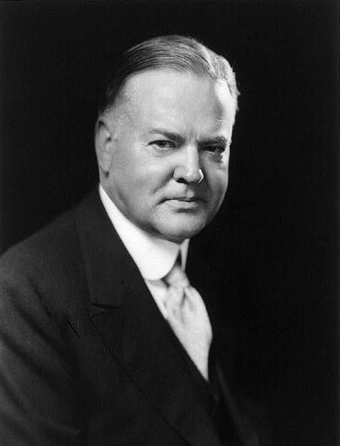
Authorizing Legislation
The Fifteenth Census Act, approved June 18, 1929, authorized “a census of population, agriculture, irrigation, drainage, distribution, unemployment, and mines [to be] taken by the Director of the Census.” This act was the first to specify only general areas to be investigated, leaving the content of specific questions to the discretion of the director. The census encompassed each state, along with Washington, DC, Alaska, Hawaii, and Puerto Rico. The governors of Guam, American Samoa, and the Virgin Islands each completed a census that same year. So did the governor of the Panama Canal Zone.
Crises and Controversies
In the time between the passage of the act and census day, the stock market crashed and the nation plunged into the Great Depression. The public and academics wanted quick access to the unemployment information collected in the 1930 census. The Census Bureau had not planned to process the unemployment information it had collected – which some statisticians considered unreliable – until quite a bit later and was unequipped to meet these demands. When it did rush its data on unemployment out, the numbers it reported were attacked as being too low. Congress required a special unemployment census for January 1931; the data it produced confirmed the severity of the situation.
Intercensal Activity
Congress mandated that another unemployment census be conducted in 1937. This special census was largely voluntary; postal carriers delivered a form to every residential address in the country and those who were unemployed were expected to fill it out and mail it back. This special census is noteworthy because it was an early opportunity for Census Bureau statisticians to experiment with statistical sampling. Two percent of households were delivered a special census questionnaire whose results were used to test the accuracy of the larger census.
Further Information
- A wide variety of historical statistics from this and other decades is available in Historical Statistics of the United States: Colonial Times to 1970. It is available as a PDF [74.4MB] or 2-part ZIP file: Part I [52.2MB] | Part II [66.1MB].
- Reports and statistics from the 1930 Census
Information provided from Census.gov
Posted in Books & Reading, Census, Education & Training, General, Information Resources, What's Up Doc / Govdocs
Tagged census
Leave a comment
A History of the Census in the United States : Part 14
The Fourteenth Census: Census Day was January 1, 1920.
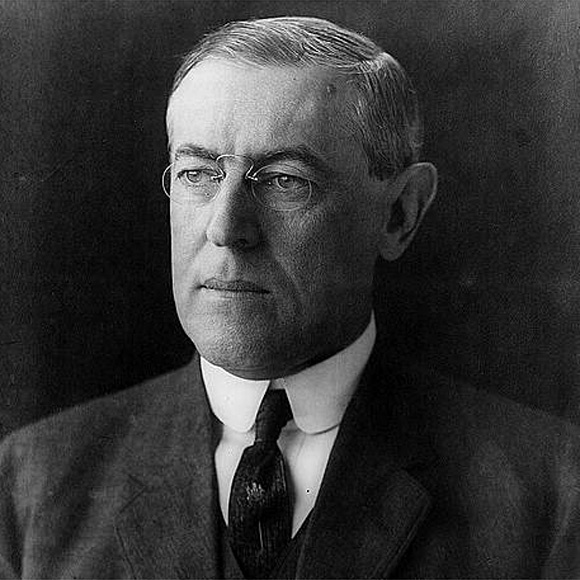
Authorizing Legislation
The date change for the 1920 census was requested by the Department of Agriculture. The department believed that in January, harvests would be completed and information about those harvests would still be fresh in farmers’ minds. Additionally, it argued that more people would be at home in January than in April.
The census act designated a three-year decennial census period, beginning July 1, 1919, during which time the Census Bureau was authorized to hire an increased work force at its Washington, DC headquarters and created a special field force to collect the data.
The act also authorized a census of manufactures to be taken in 1921, repeated every two years thereafter. Previously, the manufacturing census had been conducted every five years. The act further ordered a census of agriculture and livestock in 1925, repeated every ten years thereafter, and strengthened for penalties for those who refused to supply information or who supplied false information. These censuses, which had once been closely aligned with the decennial population count, were, by 1920, largely independent of each other.
The act also stipulated that the director could, at his discretion, furnish any governor or court with certified copies of census returns at the cost of making the search plus one dollar for certification. Individuals who wanted copies for genealogical or other purposes could also obtain them, so long as the information was not used to the detriment of the person to whom the information referred.
Enumeration
For the 1920 census, “usual place of abode” became the basis for enumeration. Individuals were enumerated as residents of the place in which they regularly slept, not where they worked or might be visiting. People with no regular residence, including “floaters” and members of transient railroad or construction camps, were enumerated as residents of the place where they were when the count was taken. Enumerators were also instructed to ask if any family members were temporarily absent; if so, these people were to be listed either with the household or on the last schedule for the census subdivision.
The format and information in the 1920 census schedules closely resembled that of the 1910 census. The 1920 census, however, did not ask about unemployment on the day of the census, nor did it ask about service in the Union or Confederate army or navy. Questions about the number of children born and how long a couple had been married were also omitted. The bureau modified the enumeration of inmates of institutions and dependent, defective, and delinquent classes. The 1920 census included four new questions: one asking the year of naturalization and three about mother tongue. There was no separate schedule for Indians in 1920.
Because of the changes in some international boundaries following World War I, enumerators were instructed to report the province (state or region) or city of persons declaring they or their parents had been born in Austria-Hungary, Germany, Russia, or Turkey. If a person had been born in any other foreign country, only the name of the country was to be entered.
The instructions to enumerators did not require that individuals spell out their names. Enumerators wrote down the information given to them; they were not authorized to request proof of age, date of arrival, or other information. The determination of race was based on the enumerator’s impressions.
Intercensal Activity
The results of the 1920 census revealed a major and continuing shift of the population of the United States from rural to urban areas. No apportionment was carried out following the 1920 census; representatives elected from rural districts worked to derail the process, fearful of losing political power to the cities. Reapportionment legislation was repeatedly delayed as rural interests tried to come up with mechanisms that would blunt the impact of the population shift. Congress finally passed a reapportionment bill in 1929. The bill declared that the House of Representatives would be apportioned based on the results of the 1930 census.
The 1929 act provided for an automatic reapportionment by the last method used unless Congress moved proactively to prevent that from occurring. The act also authorized the 1930 and subsequent decennial censuses.
Further Information
- A wide variety of historical statistics from this and other decades is available in Historical Statistics of the United States: Colonial Times to 1970. It is available as a PDF [74.4MB] or 2-part ZIP file: Part I [52.2MB] | Part II [66.1MB].
- Reports and statistics from the 1920 Census
Information provided from Census.gov
Posted in Books & Reading, Census, Education & Training, General, Information Resources, What's Up Doc / Govdocs
Tagged census
Leave a comment
A History of the Census in the United States : Part 13
The Thirteenth Census: Census Day was April 15, 1910.
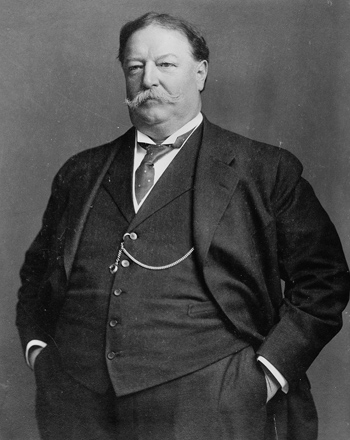
Authorizing Legislation
Legislation for the 1910 census was introduced initially in December 1907, but was not enacted into law until July 1909. The delay resulted from a disagreement over the appointment of enumerators, with President Theodore Roosevelt insisting that they be hired through the civil service system and Congress seeking to retain them as patronage positions, as had been traditional. Roosevelt won this fight.
One new feature of the 1910 act was that it changed Census Day from June 1st, which it had been since 1830, to April 15. The director of the Census Bureau suggested this adjustment, because he felt that much of the urban population would be absent from their homes on summer vacations in June.
The act also did away with vital statistics inquiries on the questionnaire, but added questions about mines and quarries. A month before the census, an amendment to the act required an additional question on nationality or mother tongue of foreign-born persons and their parents. Because the questionnaires had already been printed, enumerators were instructed to add this information to column 12 (birthplace) of the form.
The enabling legislation for the 1910 census authorized funds for the newly established permanent Census Bureau to expand its permanent workforce and specifically created several new full-time positions, including that of a geographer, a chief statistician, and an assistant director. The assistant director, appointed by the president with the advice and consent of the Senate, was to be an experienced practical statistician. All non-presidentially-appointed census employees were hired on the basis of their scores in open, competitive examinations, administered throughout the country by the Civil Service Commission.
Enumeration
For the first time, enumerators in the large cities distributed questionnaires in advance, a day or two prior to April 15, so that people could become familiar with the questions and have time to prepare their answers. In practice, only a small portion of the population filled out their questionnaires before the enumerator visit, however. The law gave census takers two weeks to complete their work in cities of 5,000 inhabitants or more while enumerators in smaller and rural areas were allotted 30 days to complete their task.
Crises and Controversies
Difficulties with the tabulation process continued despite the presence of automatic counting machinery introduced in the most recent censuses. Correcting these problems delayed publication of some population numbers. Some census results, such as the total population of cities, were issued first as brief press releases, but were expanded into bulletins and abstracts that appeared as long as a year before the final reports were published.
Intercensal Activity
When the United States entered World War I in 1917, the Census Bureau took on an important new role. During the nation’s mobilization for the war, the Census Bureau was able to use its compiled population and economic data to report on populations of draft-age men, along with the different states’ industrial capacities.
Further Information
- A wide variety of historical statistics from this and other decades is available in Historical Statistics of the United States: Colonial Times to 1970. It is available as a PDF [74.4MB] or 2-part ZIP file: Part I [52.2MB] | Part II [66.1MB].
- Reports and statistics from the 1910 Census
Information provided from Census.gov
Posted in Books & Reading, Census, Education & Training, General, Information Resources, What's Up Doc / Govdocs
Tagged census
Leave a comment
A History of the Census in the United States : Part 12
The Twelfth Census: Census Day was June 1, 1900.
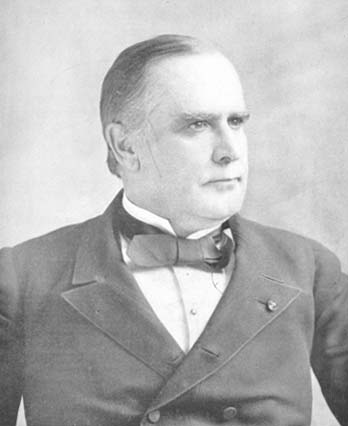
Authorizing Legislation
In the act authorizing the 1900 census, Congress limited census content to questions dealing with population, mortality, agriculture, and manufacturing. Reports on these topics, called “Census Reports,” were to be published by June 30, 1902. The act also authorized special census agents to collect statistics relating to incidents of deafness, blindness, insanity, juvenile delinquency, and the like; as well as on religious bodies; utilities; mining; and transportation, among others. These statistics were to be collected following the completion of the regular census. The preparation of the special reports developed from these statistics was to be accomplished in such a way so as to not interfere with the completion of the Census Reports.
The act also changed the title of the chief officer of the Census Office from “supervising clerk of the census” to “director of the census.” Additionally, a new position, assistant director of the census, to be filled by “an experienced practical statistician,” was established. The director was given the power to appoint staff based on noncompetitive examinations. However, in practice, positions were given to political referrals.
Enumeration
The Departments of War and the Navy enumerated military personnel (including those who were abroad). Indian Territory was enumerated with the cooperation of the commissioner of Indian affairs.
Hawaii, which had been annexed in 1898, was included in the census for the first time. (A census of Puerto Rico and Cuba had been carried out by the War Department in 1899. Under the direction of the Philippine Commission, a census of that territory was taken in 1903.)
Intercensal Activity
In 1902, the formerly temporary Census Office was made a permanent organization within the Department of the Interior. In 1903, it became the Census Bureau and was moved to the new Department of Commerce and Labor.
The transition from a temporary to a permanent agency was sometimes controversial. One of Congress’s goals in creating the new department was to centralize many of the overlapping statistical offices scattered throughout the bureaucracy; Census Bureau officials attempted, without much early success, to assume the role as chief statistical agency of the federal government. These aspirations were hindered, in part, by the Census Bureau’s subordinate position within the Department of Commerce and Labor.
Further Information
- A wide variety of historical statistics from this and other decades is available in Historical Statistics of the United States: Colonial Times to 1970. It is available as a PDF [74.4MB] or 2-part ZIP file: Part I [52.2MB] | Part II [66.1MB].
- Reports and statistics from the 1880 Census
- History and Growth of the United States Census: 1790-1890 [PDF 117MB], by Carroll D. Wright and William C. Hunt.
Information provided from Census.gov
Posted in Books & Reading, Census, Education & Training, General, Information Resources, What's Up Doc / Govdocs
Tagged census
Leave a comment
A History of the Census in the United States : Part 11
The Eleventh Census: Census Day was June 2, 1890.
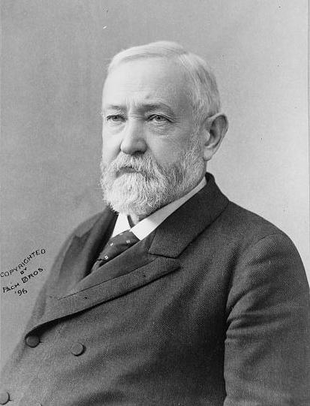
Authorizing Legislation
An act signed into law March 1, 1889 authorized the census of 1890, which was modeled after the 1880 enumeration.
Enumeration
Because June 1 was a Sunday, the 1890 enumeration began on June 2. The census employed 175 supervisors, with one or more appointed to each state or territory, except Alaska and the Indian Territory. Subdivisions assigned to a single enumerator were not to exceed 4,000 inhabitants. In cities designated by 1880 census results to have populations under 10,000, the enumeration was to be completed within two weeks. Enumerators were required to collect all information required by the act by a personal visit to each dwelling and family.
The 1890 questionnaire retained almost all of the inquiries from the 1880 census, and a few new questions were added. The 1890 census included a greater number of subjects than any previous census and more than would be included in those immediately following. New entries included questions about ownership and indebtedness of farms and homes; the names, as well as units served in, length of service and residences of surviving Union soldiers and sailors and the names of the widows of those who had died. Another new question dealt with race, including “Japanese” as a category for the first time, along with “Chinese,” “Negro,” “mulatto,” “quadroon,” “octoroon,” and “white.”
The population schedule was changed so that a separate sheet was used for each family, irrespective of the number of persons included.
As in 1880, experts and special agents were hired to make special enumerations of manufactures, Indians living within the jurisdiction of the United States, and a separate enumeration of Alaska. Furthermore, the schedule collecting social statistics was withdrawn from enumerators; the work of obtaining statistics concerning mines and mining, fisheries, churches, education, insurance, transportation, and wealth, debt, and taxation, also was conducted by experts and special agents.
For the first time, enumerators were given detailed maps to follow so they could account for every street or road and not stray beyond their assigned boundaries.
Technological Advancement
The 1890 census was notable as the first in which the electric tabulating system, invented by former Census Office employee Herman Hollerith, was used. Tabulation of the 1880 census results took almost a decade to complete, and officials hoped Hollerith’s machine would alleviate delays caused by relying on hand counts and rudimentary tallying machines to process data.
Hollerith’s machine required information from the census questionnaires to be transferred to a card, which was hole-punched at various places to indicate the characteristics – age, sex, color, marital status, etc. – of a person enumerated. The cards were then run through an electronic tabulating machine, which, using metal pins to complete circuits through the punched holes, counted or cross-tabulated different characteristics.
Intercensal Activity
Robert P. Porter served as superintendent of census until his resignation on July 31, 1893. On October 3, 1893, Congress enacted a law that directed census-related work to continue under the direction of the commissioner of labor. On March 2, 1895, a further act of Congress closed the Census Office and transferred the unfinished work to the office of the secretary of the interior, where it continued until July 1, 1897.
Further Information
- A wide variety of historical statistics from this and other decades is available in Historical Statistics of the United States: Colonial Times to 1970. It is available as a PDF [74.4MB] or 2-part ZIP file: Part I [52.2MB] | Part II [66.1MB].
- Reports and statistics from the 1880 Census
- History and Growth of the United States Census: 1790-1890 [PDF 117MB], by Carroll D. Wright and William C. Hunt.
Information provided from Census.gov
Posted in Books & Reading, Census, Education & Training, General, Information Resources, What's Up Doc / Govdocs
Tagged census
Leave a comment
A History of the Census in the United States : Part 10
The Tenth Census: Census Day was June 1, 1880.

Authorizing Legislation
The act authorizing the 1880 census gave supervision of the enumeration to a body of officers, known as supervisors of the census, who were specifically chosen for work on the census. The superintendent of the census and all supervisors were to be presidential appointees, subject to Senate confirmation. The terms of both were to expire when the census results were compiled and published.
Enumeration
Each supervisor was responsible for recommending the organization of his district for enumeration, choosing enumerators for the district and supervising their work, reviewing and transmitting the returns from the enumerators to the central census office, and overseeing the compensation for enumerators in each district.
The census act required each enumerator “to visit personally each dwelling house in his sub-division, and each family therein, and each individual living out of a family in any place of abode, and by inquiry made of the head of such family, or of the member there of deemed most credible and worthy of trust, or of such individual living out of a family, to obtain each and every item of information and all the particulars.” In case no one was available at a family’s usual place of abode, the enumerator was directed by the law “to obtain the required information, as nearly as may be practicable, from the family or families, or person or persons, living nearest to such place of abode.”
The census act also provided for the collection of detailed data on the condition and operation of railroad corporations, incorporated express companies, and telegraph companies, and of life, fire, and marine insurance companies (using Schedule No.4 – Social Statistics). Fines were to be imposed on officials of “every corporation…who shall…willfully neglect or refuse to give true and complete answers to any inquiries authorized by this act.”
In addition, the superintendent of census was required to collect and publish statistics of the population, industries, and resources of Alaska, with as much detail as was practical. An enumeration was also made of all untaxed Indians within the jurisdiction of the United States.
The 1880 decennial census was taken on five schedules: “Population,” “Mortality,” “Agriculture,” “Social Statistics,” and “Manufacturing.”
Further Information
- A wide variety of historical statistics from this and other decades is available in Historical Statistics of the United States: Colonial Times to 1970. It is available as a PDF [74.4MB] or 2-part ZIP file: Part I [52.2MB] | Part II [66.1MB].
- Reports and statistics from the 1880 Census
- History and Growth of the United States Census: 1790-1890 [PDF 117MB], by Carroll D. Wright and William C. Hunt.
Information provided from Census.gov
Posted in Books & Reading, Census, Education & Training, General, Information Resources, What's Up Doc / Govdocs
Tagged census
Leave a comment
A History of the Census in the United States : Part 9
The Ninth Census: Census Day was June 1, 1870.
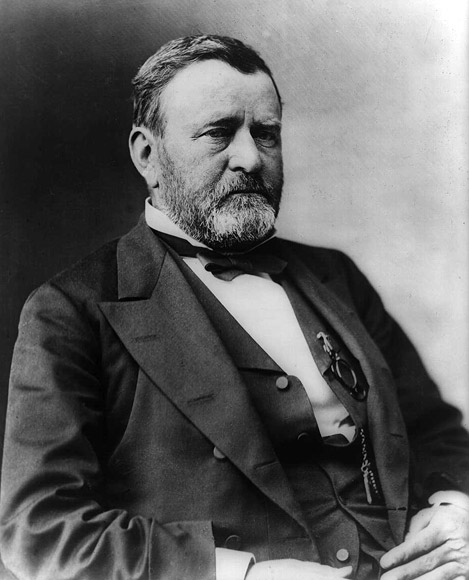
Authorizing Legislation
The 1870 Census was conducted under the authority of the Census Act of 1850. A new law, approved on May 6, 1870, called for two procedural changes: The marshals were to submit the returns from the population questionnaire to the Census Office by September 10, 1870; all other questionnaires were due by October 1, 1870. Additionally, penalties for refusing to reply to enumerator inquiries were expanded to cover all questions asked on all questionnaires.
Enumeration
The Census Office, and the position of superintending clerk were abolished in May 1865. A portion of the clerks engaged in census work transferred to the General Land Office, where work of the 1860 census was completed under the direction of the commissioner of the General Land Office
After the Civil War, the decennial census questionnaires were reordered and redesigned to account for end of the “slave questionnaire.” The schedules for the 1870 census were: “General Population,” “Mortality,” “Agriculture,” “Products of Industry,” and “Social Statistics.”
The secretary of interior selected General Francis A. Walker as superintendent of the ninth census on February 7, 1870. At the time of his appointment General Walker was chief of the Bureau of Statistics – an agency within the Treasury Department – and was one of several experts who had participated in the U.S. House of Representatives’ committee deliberations on the 1870 census. A capable administrator, Walker introduced examinations to test the qualifications of those applying for positions with the Census Office. Walker remained as superintendent until November 1871, when Congress’s failure to appropriate funds for his salary caused him to resign. Nevertheless, he continued overseeing census work as commissioner of Indian Affairs. Later, he resumed his duties as superintendent of the census, working without compensation.
The 1870 enumeration was completed by August 23, 1871.
Technological Advancement
By 1870, the job of tallying and tabulating questionnaire responses was becoming overly burdensome for the Census Office. This problem was partially alleviated with the use of a rudimentary tallying machine, invented by the chief clerk of the Census Office, and later superintendent, Charles W. Seaton.
Further Information
- A wide variety of historical statistics from this and other decades is available in Historical Statistics of the United States: Colonial Times to 1970. It is available as a PDF [74.4MB] or 2-part ZIP file: Part I [52.2MB] | Part II [66.1MB].
- Reports and statistics from the 1850 census.
- History and Growth of the United States Census: 1790-1890 [PDF 117MB], by Carroll D. Wright and William C. Hunt.
Information provided from Census.gov
Posted in Books & Reading, Census, Education & Training, General, Information Resources, What's Up Doc / Govdocs
Tagged census
Leave a comment
A History of the Census in the United States : Part 8
The Eighth Census: Census Day was June 1, 1860.
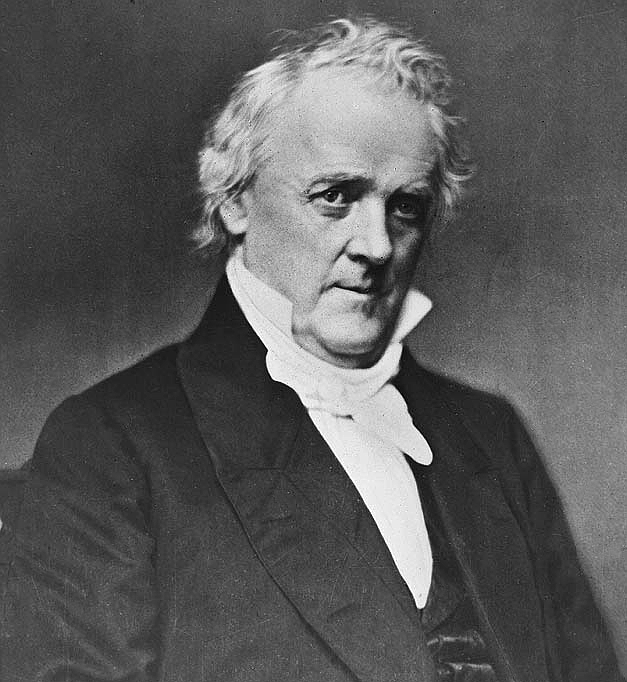
Authorizing Legislation
The 1850 Census Act was the authorizing legislation for the 1860 census. That act had stipulated that, according to the recommendation of the secretary of the interior, its provisions were to be adhered to for all future decennial censuses if no new authorizing legislation was passed by January 1 of the year in which the census was required.
Intercensal Activity
The Census Office, and the position of superintending clerk were abolished in May 1865. A portion of the clerks engaged in census work transferred to the General Land Office, where work of the 1860 census was completed under the direction of the commissioner of the General Land Office
Further Information
- A wide variety of historical statistics from this and other decades is available in Historical Statistics of the United States: Colonial Times to 1970. It is available as a PDF [74.4MB] or 2-part ZIP file: Part I [52.2MB] | Part II [66.1MB].
- Reports and statistics from the 1850 census.
- History and Growth of the United States Census: 1790-1890 [PDF 117MB], by Carroll D. Wright and William C. Hunt.
Information provided from Census.gov
Posted in Books & Reading, Census, Education & Training, General, Information Resources, What's Up Doc / Govdocs
Tagged census
Leave a comment
A History of the Census in the United States : Part 7
The Seventh Census: Census Day was June 1, 1850.

Authorizing Legislation
The Census Act of 1840 (signed into law on March 3, 1839 and amended by an act of February 26, 1840) authorized establishing a centralized census office during each enumeration. Congress left the design of the questionnaire to the discretion of the secretary of state, but specified that inquiries be made of each household. Subjects among the inquiries were to include “the pursuits, industry, education, and resources of the country.” New population inquiries included questions about school attendance, literacy, and vocation. In March 1849, Congress enacted a bill establishing a census board whose membership consisted of the secretary of state, the attorney general, and the postmaster general. The law authorized this board to prepare and cause to be printed such forms and schedules as may be necessary for the full enumeration of the inhabitants of the United States; it also authorized the board to prepare forms and schedules for collecting information on mines, agriculture, commerce, manufactures, education, and other topics, as well as “exhibit a full view of the pursuits, industry, education, and resources of the country.”
The seventh census was governed by the provisions of an act of May 23, 1850 that directed that six schedules be used to collect the information requested by the Congress. The act directed enumerators to return their results to the secretary of the interior by November 1, 1850.
Enumeration
The number of population inquiries grew in the 1850 census. Every free person’s name was to be listed, not just the head of the household. The marshals also collected additional “social statistics,” including information on taxes, schools, crime, wages, value of the estate, etc. and data on mortality.
Each marshal was also responsible for subdividing his district into “known civil divisions,” such as counties, townships, or wards, and ensuring that his assistants’ returns were completed properly.
Further Information
- A wide variety of historical statistics from this and other decades is available in Historical Statistics of the United States: Colonial Times to 1970. It is available as a PDF [74.4MB] or 2-part ZIP file: Part I [52.2MB] | Part II [66.1MB].
- Reports and statistics from the 1850 census.
- History and Growth of the United States Census: 1790-1890 [PDF 117MB], by Carroll D. Wright and William C. Hunt.
Information provided from Census.gov
Posted in Books & Reading, Census, Education & Training, General, Information Resources, What's Up Doc / Govdocs
Tagged census
Leave a comment
A History of the Census in the United States : Part 6
The Sixth Census: Census Day was June 1, 1840.
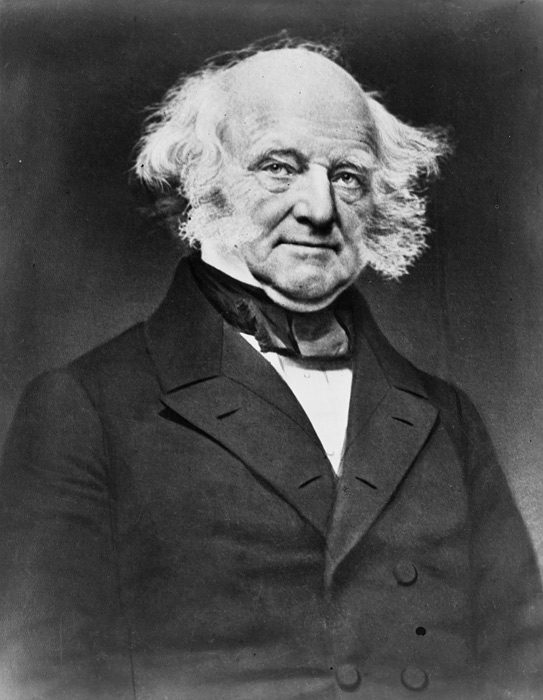
Authorizing Legislation
The Census Act of 1840 (signed into law on March 3, 1839 and amended by an act of February 26, 1840) authorized establishing a centralized census office during each enumeration. Congress left the design of the questionnaire to the discretion of the secretary of state, but specified that inquiries be made of each household. Subjects among the inquiries were to include “the pursuits, industry, education, and resources of the country.” New population inquiries included questions about school attendance, literacy, and vocation.
Enumeration
The administration of the sixth census was very similar to that of the fifth. Enumeration began on June 1, 1840. Marshals were to receive two copies of the census receipts from enumerators by November 1, 1840, one of which was to be sent to the secretary of state by December 1, 1840.
Further Information
- A wide variety of historical statistics from this and other decades is available in Historical Statistics of the United States: Colonial Times to 1970. It is available as a PDF [74.4MB] or 2-part ZIP file: Part I [52.2MB] | Part II [66.1MB].
- Reports and statistics from the 1840 census.
- History and Growth of the United States Census: 1790-1890 [PDF 117MB], by Carroll D. Wright and William C. Hunt.
Information provided from Census.gov
Posted in Books & Reading, Census, Education & Training, General, Information Resources, What's Up Doc / Govdocs
Tagged census
Leave a comment
A History of the Census in the United States: Part 5
The Fifth Census: Census Day was June 1, 1830.
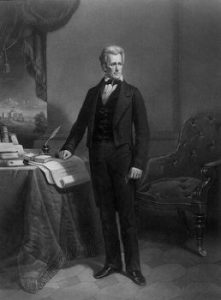
on Census Day, June 1, 1830.
Authorizing Legislation
President John Q. Adams, in his fourth address to the U.S. Congress on December 28, 1828, recommended starting the census earlier in the year than August 1. He also proposed that the collection of age data be extended from infancy, in intervals of 10 years, “to the utmost boundaries of life.” These changes were incorporated into the census act of March 23, 1830.
Enumeration
As in the previous census, marshals or their assistants visited every dwelling house for enumeration, or, as the law stated, made a personal inquiry of the head of every family in their district. Because of delays in the compilation of the census returns, the filing date was extended to August 1, 1831.
In 1830, enumerators used uniform printed schedules for the first time. In prior censuses, marshals had used whatever paper was available and had designed and bound the sheets themselves. Because federal census clerks did not have to sort through a huge variety of schedules in 1830, they were able to tabulate census results more efficiently.
The 1830 census counted the population only. After the failures of the past two censuses, no attempt was made to collect additional data on manufacturing and industry in the United States.
Further Information
- A wide variety of historical statistics from this and other decades is available in Historical Statistics of the United States: Colonial Times to 1970. It is available as a PDF [74.4MB] or 2-part ZIP file: Part I [52.2MB] | Part II [66.1MB].
- Reports and statistics from the 1830 census.
- History and Growth of the United States Census: 1790-1890 [PDF 117MB], by Carroll D. Wright and William C. Hunt.
Information provided from Census.gov
Resources for Libraries and the 2020 Census

Apply by Nov. 22 for Library Census Equity Fund
The American Library Association (ALA) is accepting applications for Library Census Equity Fund mini-grants until Nov. 22. ALA will provide 25 libraries with $2,000 mini-grants to bolster their service to hard-to-count communities and help achieve a complete count in the 2020 Census.
Census hiring: Nov. 6 webinar and new tip sheet
The U.S. Census Bureau is currently hiring 500,000 temporary workers for the 2020 Census through an online application process. To achieve a complete count in the 2020 Census, the Census Bureau needs to recruit qualified and diverse applicants in every part of the country. To learn how libraries can promote awareness of 2020 Census job opportunities, register for ALA’s free webinar on Nov. 6 and read ALA’s new tip sheet, “How Can My Library Increase Awareness of 2020 Census Hiring?” (PDF).
Preparing your library for the Census: Nov. 14 webinar and new tip sheet
With the 2020 Census just a few months away, how can libraries prepare, and what funding sources may be available to support libraries’ preparations and activities? Learn more at ALA’s free webinar on Nov. 14 and read ALA’s new tip sheet, “Preparing My Library for the 2020 Census” (PDF).
Trustees invited to become Library Census Champions
Library Census Champions is a new network of state, local and tribal library Trustees helping their libraries and communities prepare for the 2020 Census. Elected and appointed library Trustees can sign up to become a Library Census Champion and receive free information, resources, and actions to take to ensure a fair and accurate census. To learn more about this program, Register to watch the recording on-demand.
Census resources from ALACheck ala.org/census for updates through the 2020 Census as ALA continues to add new resources. For instance, find Libraries Transform images, template presentation slides (PPTX) and presenter notes (PDF)
Upcoming events
- November 6, 2019: Webinar: “Connecting Your Community to 2020 Census Jobs”
- November 14, 2019: Webinar: “Preparing Your Library for the 2020 Census”
- January 25, 2019: ALA Midwinter Meeting: “2020 Census: How Libraries Can Support a Complete Count”
- February 28, 2019: PLA Conference: “2020 Census Countdown: What You Need to Know Now”
A History of the Census in the United States: Part 4
The Fourth Census: Census Day was August 7, 1820.
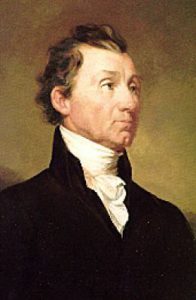
on Census Day, August 7, 1820.
Authorizing Legislation
The fourth census was taken in accordance with the census act of March 14, 1820, which required more detailed population-related inquiries than earlier enumerations. This census is notable for being the first to inquire if respondents were engaged in agriculture, commerce, or manufacturing.
Enumeration
The enumeration began on the first Monday of August. Its scheduled six-month completion time frame was extended by about seven months to September 1, 1821. As in previous decades, the 1820 census act again required assistant marshals to visit every dwelling house, or head of every family within their designated districts.
Data relating to manufacturing were collected by assistants in each district, sent to the marshals, and then transmitted to the secretary of state along with the population returns. The report on manufacturing presented the data for these establishments by counties, but the results were not summarized for each district and the aggregate statement that was released was based on incomplete returns. The 1820 manufacturing census suffers the same criticism as that in 1810: Poor enumerator training resulted in dramatic variations in data quality and accuracy.
Further Information
- A wide variety of historical statistics from this and other decades is available in Historical Statistics of the United States: Colonial Times to 1970. It is available as a PDF [74.4MB] or 2-part ZIP file: Part I [52.2MB] | Part II [66.1MB].
- Reports and statistics from the 1820 census
- History and Growth of the United States Census: 1790-1890 [PDF 117MB], by Carroll D. Wright and William C. Hunt.
2020 Census: The Law Is Clear–Personal Information Cannot Be Shared
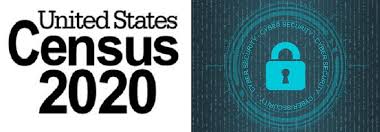
The mission of the Census Bureau is to serve as the nation’s leading provider of quality statistics about its people and economy. They couldn’t produce this information without you. Responsible data stewardship is how they maintain your trust. Being responsible stewards of your data is not only required by law but also embedded in their culture.
The Law Protects Your Information. Under Title 13 of the U.S. Code, your information must be kept confidential, and your answers cannot be used against you by any government agency or court. Anyone who violates this law faces severe penalties.
They Use Cutting-Edge Safeguards To Protect Your Identity. They do not identify individuals in the statistics they publish. Their policies and safeguards help them ensure the confidentiality of your information. Our Disclosure Review Board verifies that any product they release meets their confidentiality standards. Click on the link to learn more about the U.S Census Bureau’s Data Protection and Privacy Program: Find Out More.


